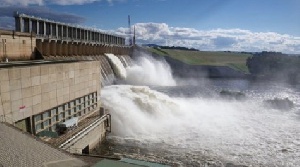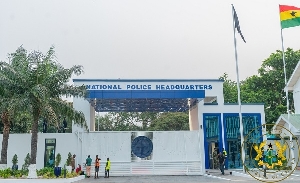The Bagre Dam in neighbouring country of Burkina Faso spill excess water from the Dam each year which ultimately affects communities located downstream the White Volta.
Those distressingly affected are our brothers and sisters in the Northern part of Ghana and this unfortunate catastrophic occurrence often leads to loss of precious lives and material logistics. Dishearteningly, Buildings and of course entire settlements are disproportionately submerged in the raging water and annihilated due to the surging force of the spillage, and this becomes so detrimental to the inhabitants and consequently the country as a whole. Plantations and cattle granges are not spared either. Subsequently, the entire agricultural undertakings are virtually brought to its knees, defeating the good intentions of the governments starship programme of Planting for food and jobs, the campaign that aims at promoting growth in food production and to create jobs across the country for the teeming youth.
Indeed, it is very significant to state that, the more adverse effect of the spillage which has become annual ritual negates the relevant socio-economic gains the country might have enjoyed in the scheme of activities, leading to threat of adequate food supplies.
The above notwithstanding, there is the urgent need for the government to strategically mitigate the consequential effect of this grave challenge that has, indisputably, for a couple of years become ‘the sword of Damocles’ impacting negatively on the successes and achievements of the state.
CONSTRUCTION OF WATER CHANNELS
The government decision to construct Dams to mitigate the horrific effect of the spillage which has mystified the entire populace, is an impeccable sound economic proclamation, in that, Dams and their accompanying reservoirs are constructed by countries for several obvious motives which incontrovertibly includes agricultural irrigation to increase crop yield and control unpredicted hunger that may loom on humanity in the event of drought a country may be confronted with.
Nonetheless, the excessive nature of the Bagre Dam spillage, demands rigorous mechanized methodology and approach to deal with. With the massive proliferation in Ghana’s population which, approximately, is said to be in the region of 30 to 31million, the incessant annual spillage should be perceived as blessing in disguise by all Ghanaians than demonic curses. The structural construction of a grandiose multi-purpose, technologically driven water channels within the core geographical location up north, that would ensure prudent utilization of the massively excess spillage for substantial irrigation and livestock purposes, could inadvertently, become the ‘magic wand’ to catapult the country’s agriculture sector to an astonishing different level.
ENORMOUS BENEFITS
Irrefutably, it must be emphasized that, the potentials of the livestock industry in Ghana but more specifically in the Northern part of the country continue to experience concomitant recession in recent years mainly due to lack of reserved water resources to support the growth of the industry. The construction of the technology-driven Water access channels could truncate these perceived deficiencies bedeviling the sector to guarantee a positive paradigm shift. inadvertently
Additionally, the proximity of the country’s northern enclave to the Sahelian regions would definitely boost the livestock industry as prominent cattle merchants and vendors are likely to troop into the enclave to access the needed services; this would definitely inure to the benefit of the country through enhanced revenue mobilization.
There is no doubt that the quick deterioration of the country’s tarred roads would be spared, especially, within the northern hemisphere of Ghana as the surging force of the spillage would be controlled with the advent of the technology-driven water access channels. The creation of both key and peripheral jobs could be guaranteed for the teeming graduates and our agriculture professionals.
Indeed, the construction of the grandiose technologically-driven water channels would go a long way to compliment the government’s 1V1D policy initiative and accord it the potency it deserves.
Opinions of Tuesday, 15 September 2020
Columnist: Joe Effah-Nkyi



















